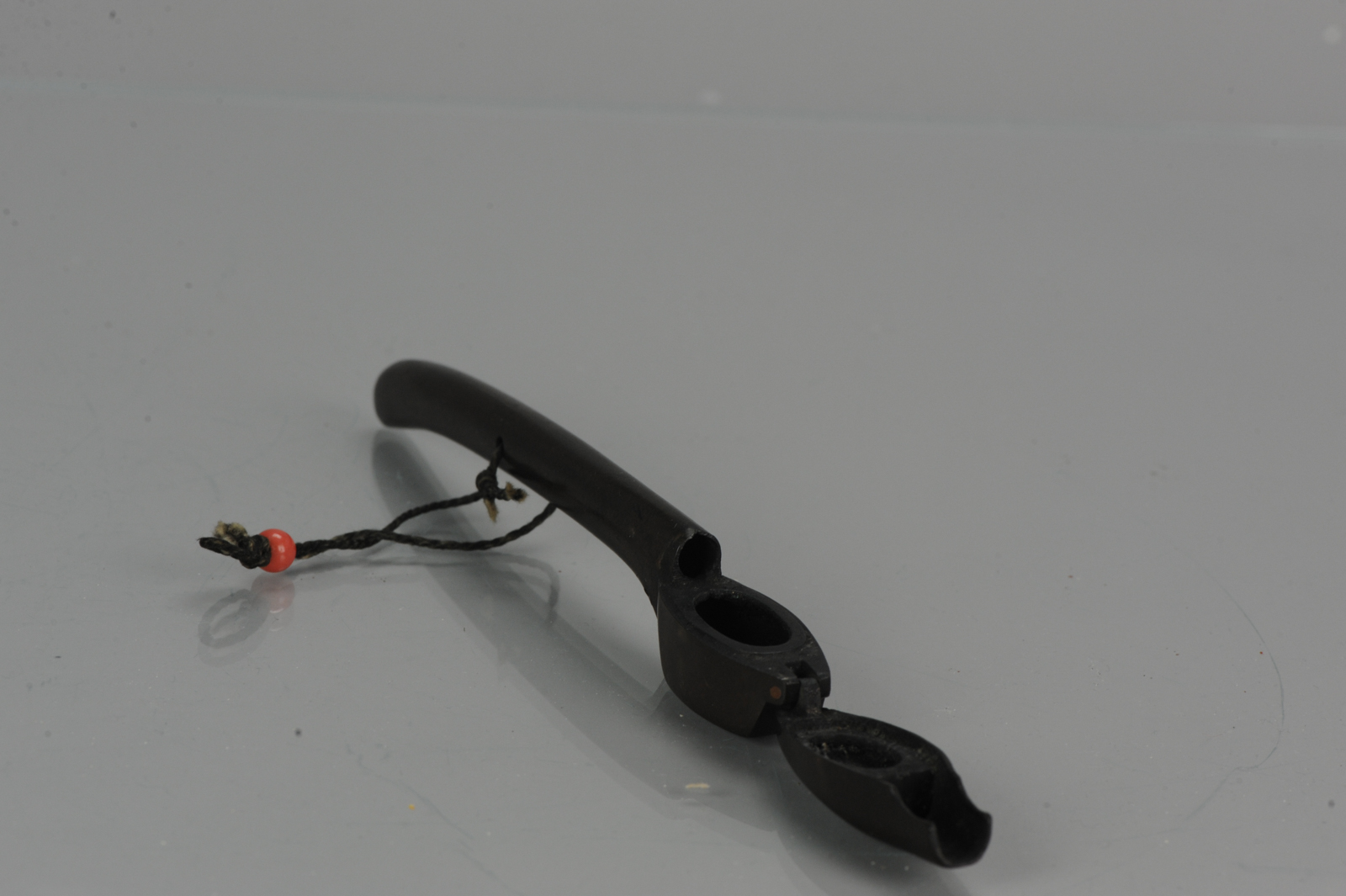Antique Japanese Bronze Hatate 19th C Meiji Inkpot Japan Unsigned
In stock
Condition Report: Overall Condition Very good condition, just some minimal age signs here and there like small scratches.180mm in length
Lovely and very detailed piece. .
If someone were to bring up the topic of Japanese antiques, what images would come to your mind? Kimono? Swords? Armor? Possibly netsuke? A few might even know what an inro is. How about the yatate?
I have shown a yatate to many of my Japanese acquaintances here in Tokyo, and was surprised to discover that most did not even know what it was! Artists and calligraphers usually knew right away, though.
A yatate (pronounced yah-tah-teh) is a Japanese portable writing set. The yatate has been around since the Kamakura period (1185-1333). It contains a traditional Japanese bamboo brush and an ink pot filled with cotton or silk which holds liquid sumi ink.
Yatate literally means “arrow stand.”
The Japanese traditional way of writing is with a brush (fude) and ink (sumi). Before the invention of the yatate, whenever anyone wanted to write or draw in ink, he had to make his own ink by grinding the ink stick in water on the grinding stone (suzuri). This method has been used for many centuries, and is still being used today.
Warriors (samurai) often had to write letters and reports from the field, and so carried a small grinding stone in a small drawer at the bottom of their quiver along with the arrows.
This grinding stone became known as the “yatate no suzuri” (arrow stand’s grinding stone). Eventually it was simply called “yatate.”
It was burdensome to have to pull out the grinding stone, ink stick, and water container every time one needed to write, but in those days before spill-proof containers, carrying liquid sumi ink could lead to disasters, especially on the battle field.
Then sometime during the Kamakura era (1185-1333 ) someone came up with the clever idea of saturating a piece of cotton or silk in liquid ink. This could be carried about in a simple container without any worry of spills.
A truly portable writing set was finally born. Now one could quickly dash off a letter by just sliding open the lid and pressing the brush into the cotton.
These new writing sets were made in the shape of a folded fan (hiogi-gata) which contained both the ink soaked cotton and brush.
Warriors continued to carry these in the quiver with the arrows, so they were also called yatate just like the grinding stones they replaced.
Additional Information
| Weight | 25 kg |
|---|---|
| Type | |
| Primary Material | |
| Region of Origin | |
| Japan Dynasty Periode | |
| Century | |
| Condition Report |









